The Last of the Mohicans – By Capt Elmo Jayawardena
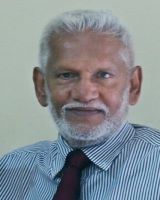
The lane down Nugegoda which is in the outskirts of Colombo, is named Mudaliar Avenue. Two left turns after that would bring you to number 1/8. This is Uncle Siri’s and Aunty Olga’s domain. Sadly, she passed away. As Uncle Siri says, “she went to heaven in 2021”, a sentiment whispered softly, sounding more like a person finding it impossible to fill the huge empty space she left. Perhaps painful heartstrings may be tugging when he mentions her. 68 years is a very long time to share a blissfully happy life and lose your soul partner.
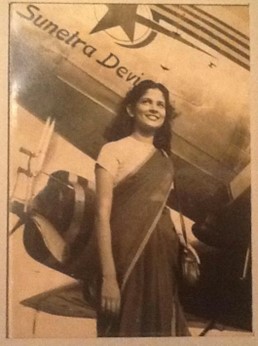
Air Ceylon first batch Stewardess Aunty Olga De Silva
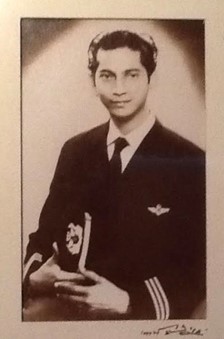
Navigator Lionel Sirimanne
Now Lionel Sirimane is alone. He is 103 years old and is a classic example for those of us who have gone beyond 75 and are pre-occupied contemplating when the bell will knell for us. Let’s take a look at this wonderful man who greets every day that dawns with a positive awakening and makes the best of it. He is on Facebook, a real fast bunny with emails and up to date with aviation technology and is well aware of what is happening in our planet. On a sunny day you would see him mowing his lawn and he scoots out driving his Suzuki to Keell’s Supermarket to buy knick-knacks and groceries. Not bad at all Uncle Siri, you do show junior oldies like me how to count our blessings.
Uncle Siri was born on 31 January in 1920 in Kurunegala and studied at the Catholic College in Kotahena. He completed his SSC and left school to join the Technical College in Colombo and learned shorthand and typewriting and got employed as a typist.
That was the beginning, common to most of the young of that era. He then applied to the Fleet Air Arm and was selected to an aviation related trade. In 1942 he was sent to RNAS school (Royal Navy Air Service) in Maharagama which was called ‘HMS Bherunda’. It was a 4-month course and Uncle Siri passed out of that institution as an aircraft electrician. There were many young men entering aviation who had their baptism in Maharagama, and they were mainly riggers, electricians and fitters. So started Lionel Sirimanne’s career in aviation which lasted 36 years in multiple roles that were connected to aeroplanes.
His first posting in Fleet Air Arm was at the Katukurunda Airport where some Italian prisoners of war had concreted the temporary metallic runway to a length of 3,300 feet. At this time the Katukurunda airfield was operating as a Royal Air Force base named ‘Ukussa’ with a reasonably equipped aeronautical repair center.
RAF pilots, engineers and WRENS were all billeted in different huts in the vicinity and so were the mechanics.
Electrician Sirimanne started working on aeroplanes, specalising in electrical systems and radio transmitters. They had all types of war kites that came to this airfield, some on regular operations and some for repairs. The types they treated at Katukurunda at times were rather way past their prime such as Swordfish, Barracuda dive bombers rigged with torpedoes, Fairly Fulmars and Sea-Fire Fighters Etc.
The work consisted of checking serviceability, repairs and modifications on aircraft brought to the single large hangar.
“Wiring in those aircraft were rather primitive circuits for landing gear, bomb release and Megger tests on circuits” says Uncle Siri. “The most important part was always the condition of the batteries,” he emphasizes to me giving me a 103-year-old smile with a ‘you see’ nod of his head.
Subsequently more modern aeroplanes too came to Katukurunda such as Grumman Martlets, Corsair fighters and Hellcats. Uncle Siri worked on them all. He was a master-craftsman comfortable with all types of electrical malfunctions in an airplane. The boy from Kurunegala had learned a valuable trade related to aeroplanes.
By this time the war ended and the participants, the winners and the losers both breathed a huge sigh of relief.
Lionel Sirimanne left Katukurunda and found employment in the radio section of the Department of Post and Telegraph. From there, he was sent to the Ratmalana Airport to repair communication facilities and navigational aids at the aerodrome.
“I came to know the first Air Traffic Controller, Mr Maurice Jansz and he advised me to learn Morse Code and get a PMG’s License to operate radio communications. He was a kind man who later became my good friend.
There was talk of a new national airline being formed and the word was out that they will be needing pilots, engineers and flight radio officers. Sirimanne hastened to learn his da da da and di di da di (- – – and ..-.) codes of the alphabet and passed his exams to become a radio officer. In 1947, Uncle Siri joined Air Ceylon as a flight radio officer and worked on charter flights. His major break came when Air Ceylon undertook to do a Colombo to Sydney flight manned by a full Ceylonese crew. Lionel Sirimanne was slotted as the second radio officer under the senior Head of Communications, Mr John Vedavanam, a very kind professional gentleman who I too had the privilege of knowing personally when I was a fledgling pilot.
Air Ceylon flew its first commercial flight to Jaffna and onwards to Madras on 10 December 1947. In the 40s commercial aviation in Asia was at its infancy. The navigational facilities were at best mediocre, and their reliability was at most times questionable. The pilots communicated with aerodromes on VHF which may have had a possible maximum range of 200 miles at best. The rest of the communication was on HF which had extended range but was not easy to operate. The flight radio officer is the one who handled all the extended communications and assisted in map reading and dead reckoning aircraft positions in navigation.
In the early 50s the Muslim community in Ceylon chartered a DC-3 from the national career to fly them to Jeddah for their annual pilgrimage to Mecca. The company did not have charts to fly this unknown route. They had very capable crews but certainly were lacking in the ‘know-how’ of flying in the isolated skies over rugged desert land.
The RAF pilots operating out of Katunayake were well versed in long-range flying and they had all the charts covering Asia and the Middle East. Air Ceylon picked a capable crew and sent them to Katunayake to obtain all the charts pertaining to the journey and they were given a thorough briefing for the route by the RAF. The plan was to fly from Ratmalana to Bombay and then to Karachi and do a ‘night-stop’. The next day they were to fly to Salala in Oman as a pit stop to refuel and then fly on to Aden for another night-stop. The final leg was to fly along the Red Sea to Jeddah. From there the pilgrims would travel by road transport to Mecca. The crew was Capt Peter Fernando, Capt Emil Jayawardena, Flight Engineer G V Perera and Radio Officer Lionel Sirimanne.
“Flying from Karachi to Salala we faced a very dangerous situation” Uncle Siri explained. “Salala was completely covered with clouds, 8 Octas of it and we could not descend as the visibility would be zero once we get into the cloud layer. There were mountains surrounding the airfield. The worst was, the airport radio beacon the only landing aid was not working and so were the communication equipment,” he sighed and continued. “It was a total dead end, nothing to see except clouds and no communication and no radio beacon to guide us to the airport. But the pilots were very clever. They were both ‘seat of the pants’ flyers with excellent situational awareness. The airport was by the coast and east of that was the Arabian Sea. We flew eastwards till we were sure we were over the water and descended through the cloud till we saw the sea and a fishing boat. We were below 1,000 feet by then. We turned 180 degrees and backtracked the way we came. Just then the radio beacon came alive pointing to where the airport was, and the VHF radio started working. We managed to land safely in Salala,” explained Uncle Siri.
“The signal of the DC-3 arrival had not reached the Salala Airport and the RAF staff manning the airfield had closed the airport and gone for a sea bath as they were not expecting any aircraft to land in Salala that day. They were enjoying the beach and the Arabian Sea when they heard an aircraft circling the cloud covered sky and realized someone was trying to land in Salala. They ran and got into their vehicle and drove as fast as they could to the airport and switched on the communications and the navigational equipment.
We refueled and were ready to depart and the RAF staff gifted us two cases of beer for the serious mistake they made closing the airport.
The rest of the trip to Aden and Jeddah and the return flight was uneventful.”
(The pilot in me always wondered how these ancient Mohicans flew their magnificent old aeroplanes with such limited technology and survived the sky? They carved the path for us to follow, and the aviation fraternity owes them at least the remembrance. – Capt Elmo)
Back to Uncle Siri. In 1954 he got married to Olga de Silva who was a flight stewardess with Air Ceylon. She had joined the company in the first batch of cabin crew recruited by the national airline. Uncle Siri and Aunty Olga had an exceptionally wonderful marriage and raised two sons and a daughter, Sunil, Laksen and Minoli who always adored their parents. I had met the senior Sirimannes when I was young and re-connected with them again in 2012 when I was writing the 100-year-old history of aviation in Sri Lanka. Uncle Siri was hale and hearty, but Aunty Olga was wheelchair bound. My wife and I at times visited them and shared a few lunches with palatable conversation. Of course, the subject was always aeroplanes and the people who flew them in bygone years. They knew stories that we loved to hear as they both had flown as fellow crew members with my father who was a DC-3 Captain.
The year 1955 was a new chapter for Mr Sirimanne. He was seconded to KLM along with a few others to work as flight crew. He started as a radio officer and operated on DC-4, DC-6, DC-7, Lockheed Constellations and Electras. The routes covered the whole world. The ‘Flying Dutchman’ flew everywhere. Aviation communication and enroute Air Traffic Control steadily became more sophisticated and the Radio Officers became redundant Internationally.
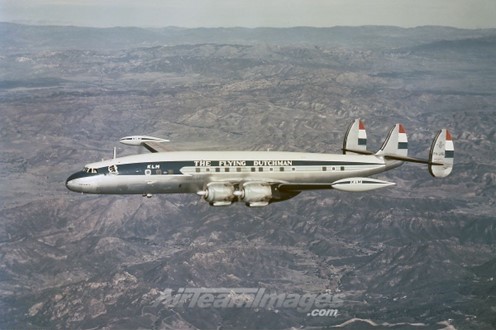
The triple rudder Allison engined KLM Super Constellation
Uncle Siri shifted seats and became a Flight Navigator sponsored by KLM. A whole new world of Astro Navigation opened to him. It is a poetic art of calculating an aircraft’s position by measuring the elevation of a star and its azimuth and using an almanac to draw a possible location. Mark St Helaya method was used for celestial navigation work. This was also how they navigated the sailing ships of the new world. Modified and improved versions came to aeroplanes and specialized navigators used their sextants to accurately plot aircraft positions.
This is what Navigator Sirimanne did from 1957 to 1961 flying mainly the Atlantic on KLM’s triple rudder Allison engine powered Super Constellations. He may have used popular navigational stars such as Aldebaran from Taurus, or Sirius from the leg of Orion and the ever-popular Altair to cross the Atlantic from Amsterdam to New York. The navigators picked their stars and pre calculated positions of the aircraft and waited for the calculated time to use the periscopic sextant and measure the stars. The Lockheed Constellation flew around 18,000 ft and often the Atlantic sky was cloud laden leaving no possibility to see stars to make calculations. I too flew the same route crossing the Atlantic many times on Jumbo Jets. On such flights we pressed a few buttons and commanded the aeroplane to go to New York and back with pinpoint accuracy navigating from FMS (Flight Management System) equipment. We were blessed. Uncle Siri crossed the Atlantic looking perhaps at the same stars that Christopher Columbus used to navigate the Santa Maria.
Three cheers to you Uncle Siri, I certainly envy you for that serene act of shooting stars with a sextant from an aeroplane.
The Navigator returned home after 6 years of flying with KLM. He was back in Air Ceylon and worked as an aircraft electrical engineer and moved to jets when the Trident 1E came into service in 1969. He also qualified to sign Qantas and BOAC planes that landed in Katunayake. Air Ceylon stopped operations in 1979 with the birth of Air Lanka and Uncle Siri said his fond farewell to aviation after 36 long years. He has had his moments and was left with memories of wonderful aeroplanes he flew with unforgettable crew members.
Lionel Sirimanne was a well experienced and efficient Flight Radio Officer. He found alternate employment to man the communications in ships and switched to being a sailing radio officer in the Merchant Navy. Sailor Sirimanne went all over the world traversing the popular sea routes and heading to ports in the Atlantic, the Mediterranean, the Black Sea, the Indian Ocean, almost all seas except the Pacific. In 1986 he said good-bye to his working life, just so he could be home with his lovely wife Aunty Olga. Home was the aviator from the skies and home was the sailor from the seas. The children had flown the nest to pitch their tents in foreign lands and Uncle Siri and Aunty Olga settled in good old Sri Lanka to a well-deserved restful twilight.
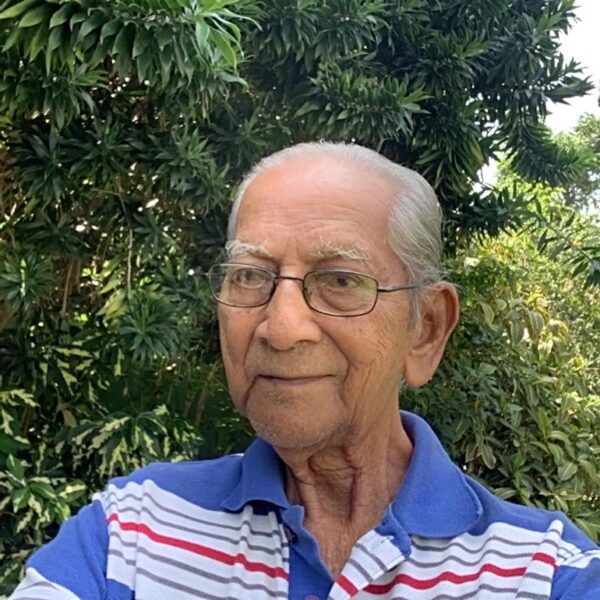
The last of the original Mohicans Uncle Siri
“It is only at the going down of the sun one would know how beautiful the day has been.” The Sirimanne couple enjoyed their time together thanking the good lord that gifted them a beautiful life. I saw them in 2012, Uncle Siri was 92 and Aunty Olga a tad behind. True the sun was disappearing from the horizon but there was enough light still to paint in clear pastel colours the remainder of their lives.
The final ‘good-bye’ of Aunty Olga must have been extremely difficult for Uncle Siri to accept. But he still keeps on batting, loved and adored by his children and their friends. At 103, I do not think there is any friend of his vintage walking this planet. That must be sad, but he makes the best of it still, doing little household chores and pruning his white-leafed shoe flower plants in the yard. He sure is an admirable example for the elderly, a man who has the wisdom of words to share with the younger generations on how precious life is and how lucky we are to count our blessings. Off and on he would meet another old pelican like me, and he still lights up bright when the conversation shifts to old aeroplanes and old pilots who flew them who are not with us anymore.
“Such is life” says Uncle Siri, the Face Book and email ‘fast bunny’ who drives his little Suzuki and mows his lawn on a sunny day.
Capt Elmo Jayawardena







